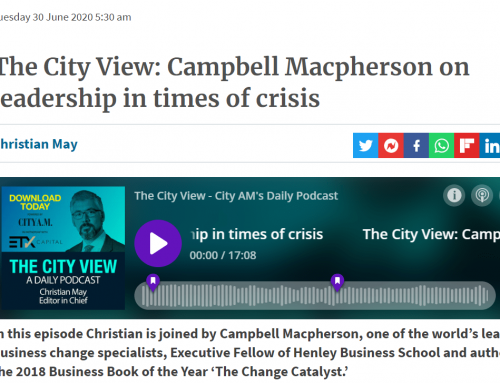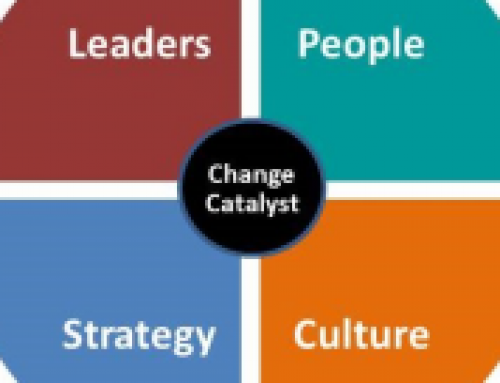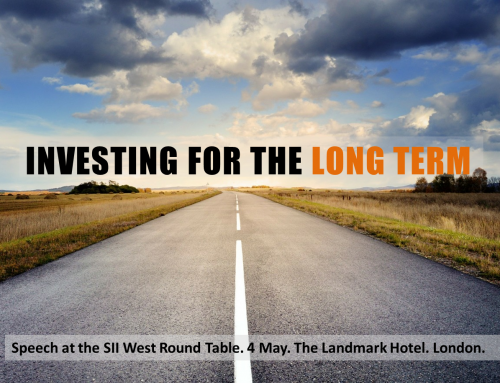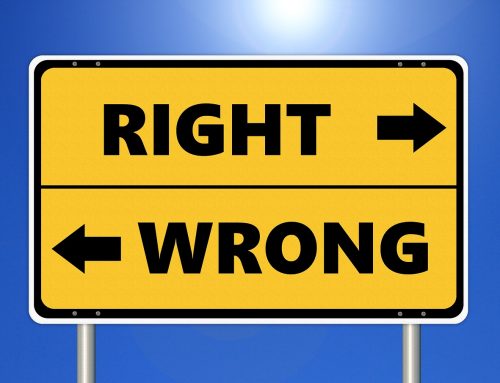April 2019. A clear and genuine Purpose is critical for your organisation’s future success. A company without one will struggle to achieve its potential. It will also struggle to attract and retain talent and clients alike.
As I outline in ‘The Change Catalyst’, a good strategy is comprised of four components:
- Analysis
- Strategic Direction
- Go-to-market strategy
- Implementation
Of all of the strategic statements contained in the ‘Strategic Direction’ section (Vision, Mission, Values), the most important by far is ‘Purpose’.
A Purpose is a clear and concise statement of why your company exists and for whom; of why your organisation matters.
It is the bed rock of your strategy, your values and your culture. It underpins your competitive advantages. It is the reason why your people bounce into work every morning: It guides what they do, how they do it and why. It helps them to work with one other to deliver. It is a key reason why people want to work for you and a key reason why clients want to work with you.
What is your Purpose?
Is it genuine? Is it inspirational? Does it resonate with your people and your customers alike? Do all of your people actively embrace it? Does it underpin how they act, think and feel about the company and its customers? Do your leaders embody it?
Critical for attracting and retaining talent and clients
A recent HBR study found that employees who derive meaning from their work report almost twice the job satisfaction and are three times more likely to stay with their employer. This is especially true for employees under 35.
Millennials are also the next generation of decision-makers in your client organisations. They will seek to do business with organisations that have a clear Purpose and values that align with theirs. This is not just a whim – they mean it. If your business lacks a genuine Purpose, they are unlikely to work for you, work with you or buy from you.
What does a good Purpose look like?
“Your Purpose must be simple and it must tread the fine line between being generic enough to be relevant to every part of the business and yet specific to your business or at least your part of the industry. And it must encourage / enable your people to take a new look at what they do – whilst giving them a constant reference to ensure what they are doing and how they are doing it is in line with core reason for the company’s existence. It is quite a challenge for a concise statement to pass all of these tests, but it is well worth the effort.”
“The answer to “Why do we exist?” cannot be a Blinding Glimpse of the Obvious (BGO) such as to maximise profit or shareholder return. Like “comply with the regulator”, these are givens. A successful Purpose Statement must be customer-facing (e.g. “Our purpose is to enable our clients to build highly successful businesses”), and it must help to guide your managers and employees in their decision-making and actions.” (From ‘The Change Catalyst’ Chapter 25: ‘Vision, Mission and Other Buzzwords’)
Your purpose should also have one eye on ‘the greater good’ – of the industry or society at large. (More about that in the full article.)
Of course, compiling a Purpose Statement and refining the other strategic statements is just the beginning. They then need to be made real; embedded into how the business operates. This requires working as a team to identify the key opportunities and implications for the organisation.
How do we do this?
Implementation cannot be a top-down solution. 21st Century leadership is a team game, not a solo pursuit. While the CEO has the final right of veto, the clarification of your strategic statements and strategic direction will only be genuine and sustainable if the key influencers across the organisation – across ages, genders, roles, expertise and sectors – are all genuinely engaged in the process.
The secrets of success are: authenticity, wide engagement, genuine engagement, pragmatism, clear governance and decision making processes, and a relentless focus on outcomes.
The full process I have used for years to help companies clarify strategic statements can be found in the full article. Download the full article here.
“What is your Purpose?” Your company’s future may very well depend upon your answer.
Warm regards
Campbell.















